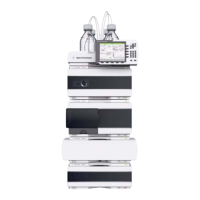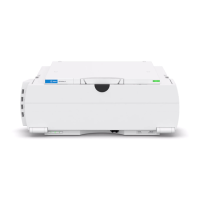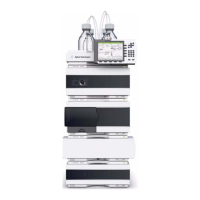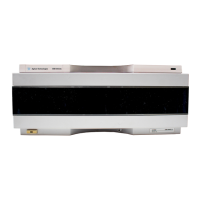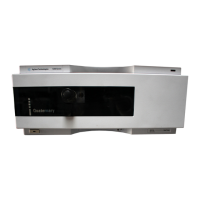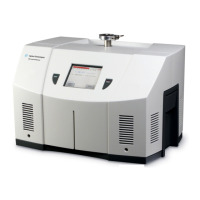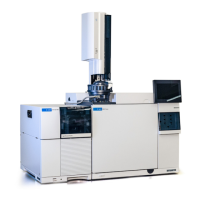Do you have a question about the Agilent Technologies Infinity 1260 and is the answer not in the manual?
Important warnings about hazards and precautions.
Overview of the detector's purpose and key features.
Explanation of the detector's working principles and basic operation.
Detailed description of how the refractive index detection occurs.
Description of the eluent's path through the detector's components.
Feature for monitoring usage and scheduling maintenance.
Description of the physical components and design.
How to connect power and communication cables.
Overview of available communication and data interfaces.
Configuring module settings via DIP switches.
Environmental and power needs for optimal operation.
Dimensions, weight, and environmental operating limits.
Key performance metrics like noise, drift, and sensitivity.
Steps for safely removing the detector from packaging.
Guidance on arranging modules for optimal system performance.
Procedures for physically placing and connecting the detector.
How to connect the tubing for sample and solvent flow.
General guide to operating the detector.
Software interface for controlling detector functions.
Configuration options for detector parameters.
Procedure to verify basic functionality.
Method for assessing detector stability.
Tips for achieving best performance.
Identifying and resolving baseline instabilities.
Procedures to ensure a stable baseline.
Understanding status lights and built-in tests.
Interpretation of visual status signals.
General explanation of error message display.
Common error types applicable to multiple modules.
Errors unique to the RID.
Explanations for messages indicating a wait state.
Step-by-step guide for calibrating the detector.
Detailed procedure for optical balancing.
How to use the internal diagnostic chromatogram.
Overview of maintenance principles.
Safety precautions during maintenance.
Summary of maintenance tasks.
How to clean the exterior of the module.
Procedure for cleaning the flow cell.
Steps to identify and fix leaks.
Updating the detector's software.
Lists of common part kits for maintenance.
General information on various cable types.
Specifics on analog signal cables.
Specifics on remote control cables.
Specifics on Binary Coded Decimal cables.
Specifics on network communication cables.
Cables for connecting to a computer.
Cables for external control signals.
Important safety guidelines.
Guidelines for using various solvents.
Important warnings about hazards and precautions.
Overview of the detector's purpose and key features.
Explanation of the detector's working principles and basic operation.
Detailed description of how the refractive index detection occurs.
Description of the eluent's path through the detector's components.
Feature for monitoring usage and scheduling maintenance.
Description of the physical components and design.
How to connect power and communication cables.
Overview of available communication and data interfaces.
Configuring module settings via DIP switches.
Environmental and power needs for optimal operation.
Dimensions, weight, and environmental operating limits.
Key performance metrics like noise, drift, and sensitivity.
Steps for safely removing the detector from packaging.
Guidance on arranging modules for optimal system performance.
Procedures for physically placing and connecting the detector.
How to connect the tubing for sample and solvent flow.
General guide to operating the detector.
Software interface for controlling detector functions.
Configuration options for detector parameters.
Procedure to verify basic functionality.
Method for assessing detector stability.
Tips for achieving best performance.
Identifying and resolving baseline instabilities.
Procedures to ensure a stable baseline.
Understanding status lights and built-in tests.
Interpretation of visual status signals.
General explanation of error message display.
Common error types applicable to multiple modules.
Errors unique to the RID.
Explanations for messages indicating a wait state.
Step-by-step guide for calibrating the detector.
Detailed procedure for optical balancing.
How to use the internal diagnostic chromatogram.
Overview of maintenance principles.
Safety precautions during maintenance.
Summary of maintenance tasks.
How to clean the exterior of the module.
Procedure for cleaning the flow cell.
Steps to identify and fix leaks.
Updating the detector's software.
Lists of common part kits for maintenance.
General information on various cable types.
Specifics on analog signal cables.
Specifics on remote control cables.
Specifics on Binary Coded Decimal cables.
Specifics on network communication cables.
Cables for connecting to a computer.
Cables for external control signals.
Important safety guidelines.
Guidelines for using various solvents.
| Brand | Agilent Technologies |
|---|---|
| Model | Infinity 1260 |
| Category | Security Sensors |
| Language | English |

